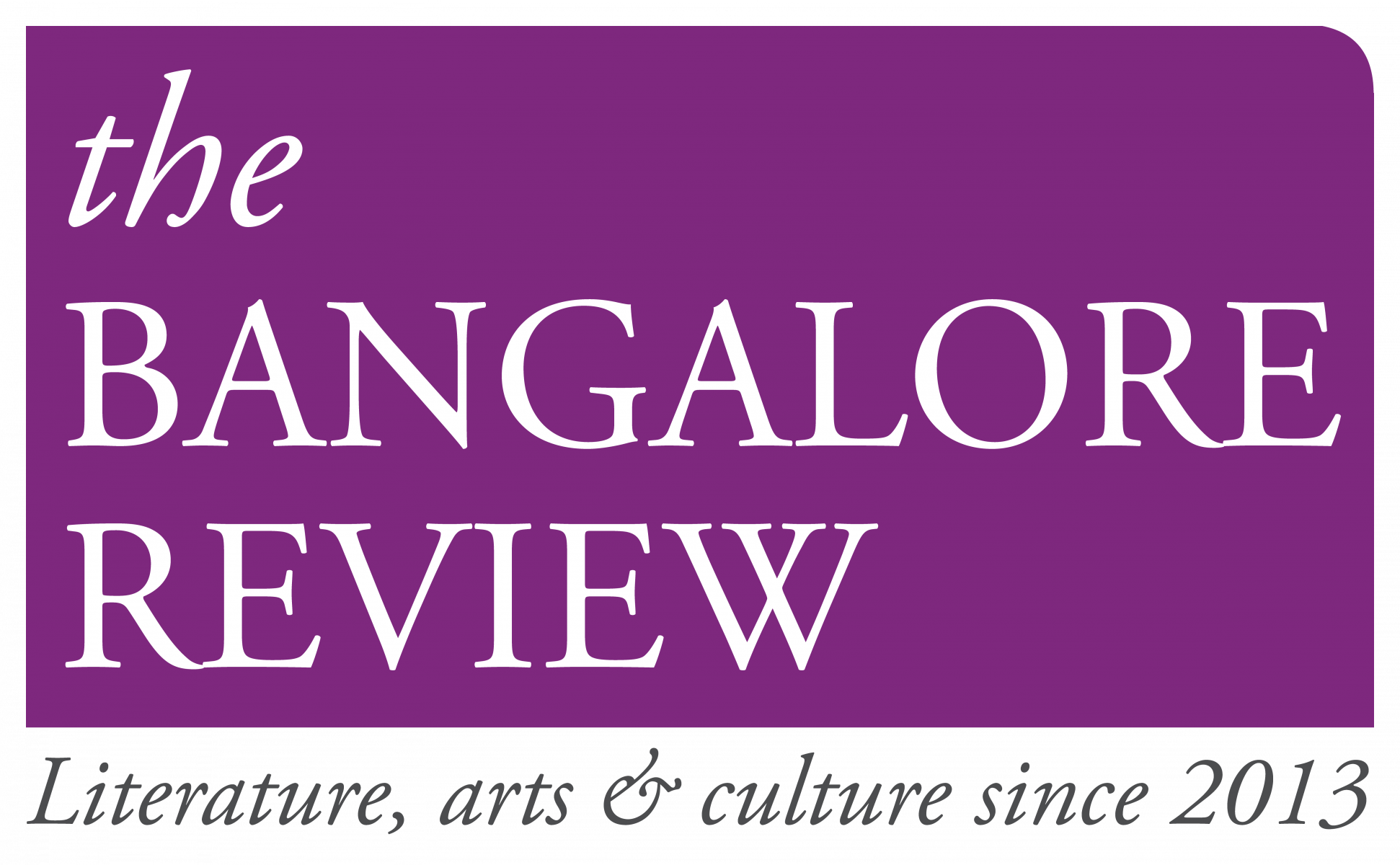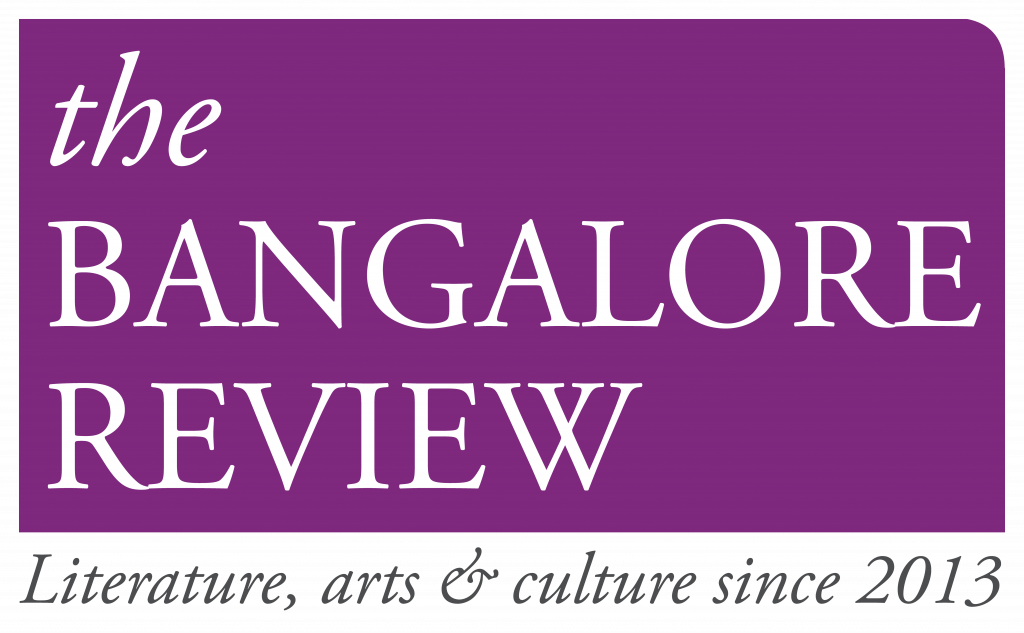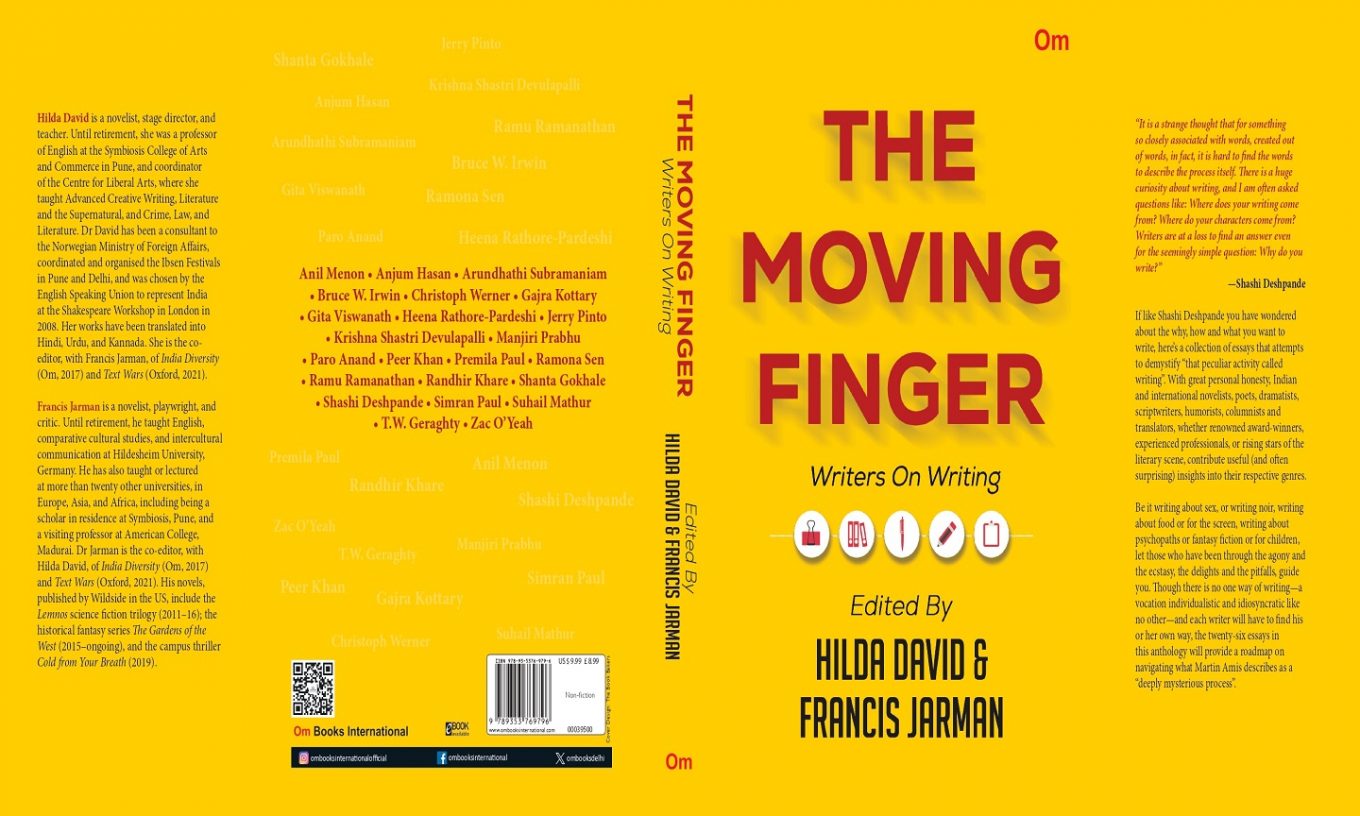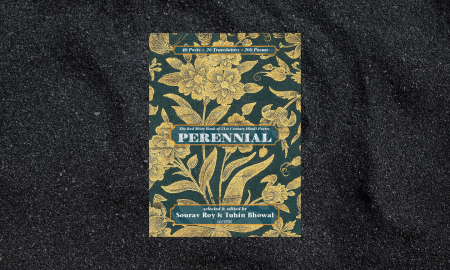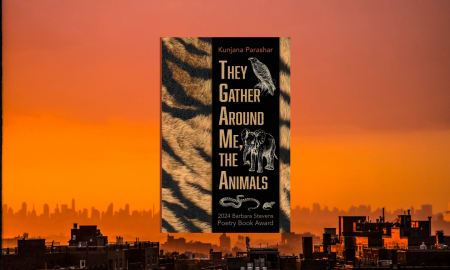TBR: Tell us a bit about the ethos that governed this anthology, especially when one toes a fine line between running the risk of coming off as didactic, instead of encompassing.
We were clear from the start that this was not going to be one of those didactic “This is how you do it” books. It could have been if we’d wanted to. Hilda and I have both taught creative writing (though to university students, and as an enjoyable and satisfying activity, rather than to keen literary wannabes) and we’re familiar with a lot of the Self-Help, How to Write, Tips and Tricks kind of literature. But we decided to do something less banal, more honest, and undoubtedly more exciting.
Why more honest? Because although you can teach certain writing skills, you can’t by that means alone turn someone into a good writer. They have to do that themselves, drawing on their own inner resources—if those resources are indeed there. There are writing courses and academies that will tell you that “Everyone has a book inside them”, and that is not completely wrong. But who would want to read most of those books?
Our approach would be different. We would ask experienced writers to give us their take on what they were doing, the inside story so to speak. To what extent they would include didactic elements was left up to them, and only a handful of the contributions adopted a systematic approach.
So, for instance, the historical novelist catalogued typical traps and pitfalls faced by those writing in that genre.
The author of fantasy fiction undertook a survey of the types of secondary world that fantasy writers can choose from (because that choice is the first and most important one that those writers have to make).
The contributor who discussed the topic “Writing about Sex” focused more on how not to write about sex (unless you want to make a fool of yourself).
It was the experienced technical translator who came closest to a How to Write approach by offering a “basic recipe for translation” structured on the “six honest serving-men” of Kipling’s poem: What and Why and When and How and Where and Who.
Most of our contributors wrote from the heart, giving personal, often intimate insights into their craft. Their essays contain striking perceptions, a lot of humour, and a considerable amount of hard-earned wisdom. They are not templates that a would-be writer should adopt “because that is the right way to do it”, but something more valuable than that—they are deeply felt accounts that will inspire and encourage them on their own unique journey.
TBR: World over, we see a change in the very understanding of who a writer is. Today, many subject experts from all kinds of fields are turning writers, and there’s a huge market for such writing too. Given the circumstances, do you think a book such as this provides a base for upcoming writers to think in different directions, not only in terms of style, but also subject choices, and a certain arithmetic behind writing?
Yes, indeed. In discussing this, however, we need to navigate a tricky binary—between what we might call “literary” and “technical writing”.
Companies now frequently hire employees with the job description “writer”, to produce advertising and PR copy, product descriptions, documentation, internal and intercompany communications, and much more besides. They may not be poets, novelists, dramatists, or scriptwriters, except possibly in their free time, but they will be using many of the same skills, since all writing that intends to communicate meaning and create understanding benefits from clarity, concision, logical structure, good choice of vocabulary, and so on. (I realise that there is avant-garde, experimental writing that worships at different altars, but that doesn’t invalidate the point I am making here.)
For technical writing, if those goals can be achieved, and the content is correct, that is generally sufficient. Tears and epiphanies are not on the agenda. Literary writing that aims to stir emotion, or even touch the reader’s soul, of course goes beyond that. Yet there is also an in-between area, in the work of many historians, political or cultural essayists, journalists and commentators, where the primary intention might have been to explain or describe but the writing is graced with beauty.
The essays in The Moving Finger cover most of the genres of literary writing, but we included contributions on food journalism and on translation, both literary and technical. In addition I would have liked to have been able to add news journalism (but all the journalists I approached insisted they were “too busy”) and advertising copywriting (a profession in which we had no contacts).
Although the literary side of writing interests me far more, there is no point in being snobbish about technical writers. These are people who are paid serious money to write well. Take a pause to let that sink in, and then compare them to literary writers, few of whom earn good money and many of whom, let us be honest, produce only unoriginal dross. (Not that there is any general correlation between writing well and being paid generously for it.) The advent of self-publishing has made it possible for anyone who so wishes to inflict their efforts on the world, in book form or online, and announce, “Hey, look, I’m a writer!” The era of “Everyone has a book inside them” has now truly arrived, and without even the need for help from writing academies.
For those who care about writing, a new threat has recently loomed into view: Artificial Intelligence (AI). “It’s a bit terrifying if, like me, you write for a living. Not least because it probably took less than a minute to generate, and it does, certainly in some parts, sound just like me.” Those are the words of a writer whose friends gave her, as a present, a book purportedly “by her” but actually generated by AI.
With regard to literary writing, those who are (for the moment) in greatest danger are the authors of pulp genre fiction, whose formulaic and predictable plots, cliche-ridden language, and monotonous style are easiest for the computer to imitate. However, the computer programmes will get better and better, and this is a topic that unfortunately will not go away.
TBR: As an editor, what was your process of selection for including the essays or the writers you chose for this project?
This was our third collaboration as editors of an anthology, and from the two previous projects we had acquired many friendly contacts among writers, both Indian (resident or of the diaspora) and non-Indian. We had also organised several international conferences at Symbiosis in Pune, co-sponsored by my own university in Germany. Then there were friends (including two former colleagues of mine) who happened to be writers. Finally, there were writers whom we didn’t know personally (though some were recommended by friends of ours) who seemed to be a perfect fit for certain topics but who would have to be “cold called” (or “doorstepped”, to use an expression from journalism).
It proved to be useful that we had the support of Premila Paul of SCILET (the Study Centre for Indian Literature in English and Translation) in Madurai, our agent Suhail Mathur, and our editor at Om Books, Shantanu Ray Chaudhuri—between them, they seem to know just about everyone in the Indian literary scene.
We started sending out our “call for submissions”. I won’t reveal what our success rate was (especially among possible candidates in the last category). Or how often I heard “sorry, too busy”. Fair enough, writers can be very busy people, especially when they have a living to earn. We weren’t offering any fee, and Hilda and I are not exactly famous names. But there was another reason, a less obvious one, why I think that some of the writers we approached said no.
It is this. Analysing someone else’s writing is one thing—analysing your own quite another. There are certain activities, like riding a bicycle, or breathing, that are best done rather than thought about, because brooding about them tends to interfere with being able to do them properly.
We intentionally took not one but three essays on writing poetry. Two of them are deeply personal, the third more conventional, but each of them raises an important point about the creation or reception of poetry.
We likewise accepted three very different but highly individual essays on writing for the stage.
We have multiple contributions on writing prose fiction, with each focusing on a particular aspect (such as the role of memory) or a genre (such as noir, mythology, or children’s literature).
I don’t have a favourite among the contributions—I have many!—but I do have a soft spot for Jerry Pinto’s essay on literary translation.
And if I had to single out a quality that makes The Moving Finger distinctive, it is that it contains so many very different approaches to writing, composed by people who love what they are doing.
TBR: What are the techniques or concerns that govern writers in South Asia, vis-à-vis those outside this geography, and do you see that reflected in the essays produced here?
In our interconnected world, writers in English, wherever they happen to be, will be aware of each other, far more so than they were before the onset of the internet. An ever-increasing number of Indian writers have travelled widely, have attended international conferences, have been postgraduate students or visiting lecturers in Britain or the United States. Of course you will have been socialised differently if you grew up in Delhi or Chennai, rather than in Manchester or Buffalo, but the discovery of cultural diversity is no longer a shocking, disturbing experience (at least among educated people). Not only do we now expect differences in ethnography and mentality, we often find them fascinating and invigorating. They can lead to synergistic breakthroughs, and do wonders for our creativity.
Yes, Indian writers may be preoccupied with, and be working through, issues around family, caste, or religion that are puzzling to some Western readers. But similar problems of comprehension will be true for the other direction. It is not “parochial” when Indian writers are deeply concerned, often very critically, with caste inequality, for example. What is parochial is to accept only what is familiar to you, without ever challenging it, because you will then not only miss out on every other possibility—you won’t, for want of comparison, even understand what you thought you knew. As Kipling put it, “What should they know of England who only England know?”
But broadly speaking, writers everywhere are dealing with the same concerns, such as relationships, emotions, work, food, the natural world, conflicts and crises, health, fears and beliefs. “The proper study of mankind, is man” (Alexander Pope), and that goes for everyone wherever they happen to be. Almost exactly nineteen centuries earlier, the Roman playwright Terence had declared: “I am a man, and nothing human is alien to me”, which is perhaps the wisest statement of intent ever made by a writer.
The best writing will transcend barriers of geography or language, and belongs to us all.
One last quotation, if I may? In 1827, the German writer and polymath Goethe declared: “I am more and more convinced that poetry is the universal possession of mankind, revealing itself everywhere and at all times in hundreds and hundreds of men,” adding: “National literature is now a rather unmeaning term; the epoch of world literature (Weltliteratur) is at hand, and everyone must strive to hasten its approach.”
In this ecumenical spirit, we chose to include a limited number of contributions from non-Indian authors in the collection, by writers from the UK, the US, Ireland, and Germany. Hilda discusses this decision in her Preface.
As for what is specifically Indian in our book, yes, many of our contributors reveal how Indian writers and traditions have influenced them, and non-Indian readers will learn a lot about India from the autobiographical elements in some of the essays.
TBR: Given the fact that this is a book where writers talk about the craft, for other writers, what do you think non-writers will take away from this book?
It was our aim to produce a collection of texts that appealed principally to writers and would-be writers. That was our main target readership, and in India that is a pretty big group, big enough (we hoped) to make the book commercially viable. A further potential readership group would be people who enjoy reading good literature, and who are interested in how it comes to be written. We didn’t think much beyond that.
That said, many of the essays will be an enjoyable read for even the most literature-challenged reader. They are lively, entertaining, and sometimes very funny. In fact I challenge any reader not to be gobsmacked by the hilarious negative examples given in “Writing about Sex”, and not to be amused by “How to Write Funny”, which opens with the helpful suggestion that one way to achieve that would be to hold your pen between your big toe and your long toe. These essays, like many of the others, will be appreciated not just by the literature fans but also by readers who’d never dream of trying to write poetry or a story.
How many such readers are likely to find their way to the book is a moot point, though those that do will learn that writing is an enjoyable activity that nevertheless makes serious demands of those who practise it.
TBR: Would you think of expanding this, with another anthology that includes more language writers?
I could imagine a follow-up volume with the net cast wider to bring in different kinds of non-literary writing, as well as perceptions and revelations from established writers working in languages other than English that also have a great literary tradition—Tamil, Arabic, French, German, Italian, and of course many, many others.
A different idea for a follow-up anthology that I find more appealing would be a collection of essays by writers about writers (contemporary, or earlier) who have been important to them: as an influence, an inspiration, or a challenge. That could produce some lively and surprising pairings, and fascinating insights into both the author and his or her chosen writer.
